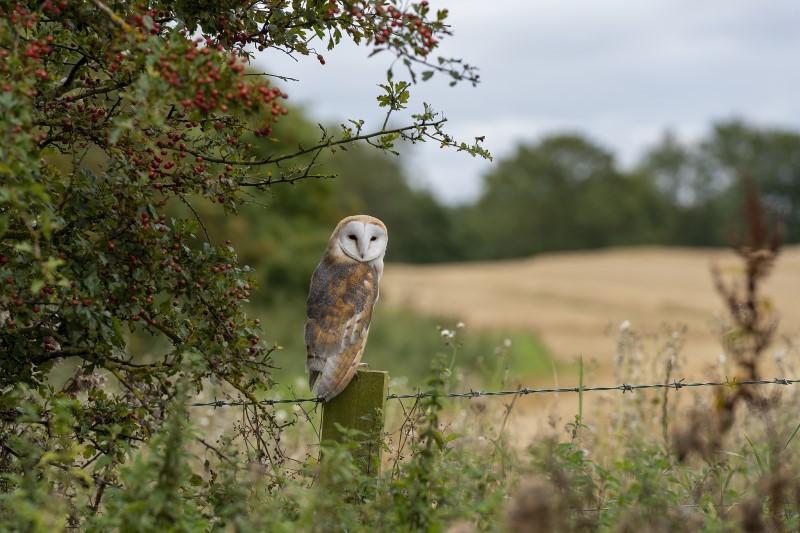Wildlife in the Garden
By Josh Reilly
You don’t have to encourage wildlife in the garden. It’s there already. In fact, you are probably trying to do the opposite, at least when it comes to raccoons, mice, squirrels, insects, birds that eat seedlings, and those twin scourges of SLV gardens, gophers and deer.
Other visitors, however, are most welcome, if a bit hesitant or scarce. Let’s start with earthworms, without whom, there is no garden. Yes, they are ubiquitous, but not evenly distributed. Remedy this with generous applications of organic matter. Bagged organic soil amendments, such as mulch, compost, coir, conditioners, and bedding mixes all help, especially if high in organic matter. Making and spreading your own compost adds nutrition and tilth. Compost consumes kitchen scraps and leaf litter sustainably and feeds your earthworms, who graciously respond with a population explosion. Easiest of all is to simply let organic matter accumulate. Where leaves fall, just leave some or all of them. And watch carefully over the coming year. Unless you look closely you won’t see the earthworms, but you will see a lot of last year’s leaves disappear into the dirt, as if by magic.
Earthworms will continue this cycle in perpetuity, as they have since long before Homo erectus got up and walked and will continue to do long after future paleontologists are done indexing our fossilized bones. No reason not to help them out a little, however.
Predators like owls, kestrels, red tail hawks, and other raptors will summarily and sustainably dispatch your less watchful rodents. Cats do the same, but are, unfortunately, more likely to catch migratory songbirds. Some of these birds are rare or becoming rare due to climate change and urbanization. I don’t discourage my predatory neighborhood felines, but I have few illusions about their efficiency as gopher predators. BTW, a well-fed cat is actually a better hunter. Well-fed cats have more energy for the hunt. And please remember that almost all predators have their own predators. Bring Fritz in for the night or tempt your local coyotes.
To attract owls, some local gardeners, bird watchers, and wildlife lovers have built and installed owl nesting boxes (audubon.org/news/how-build-screech-owl-nest-box), with some success. Similarly, bat nesting boxes may encourage those unjustly stigmatized crepuscular hunters. Any animal that eats that many mosquitoes and gnats deserves our undying love and gratitude. My skies here in Ben Lomond are home to many other common raptors without any encouragement from me, but you may find helpful ideas here: thespruce.com/how-to-attract-backyard-hawks-386258. Remember that a large population of prey is required to sustain a few raptors at the top of your local ecosystem. Owls may help control mice but never eradicate them.
If you want butterflies, you must feed caterpillars. They swarm all over my apple-blossom Penstemon right before bloom time. These insects do most of their eating as larvae, but adult stage tiger swallowtails will linger in Summer and Monarchs will alight in Fall for the nectar in Butterfly Bush (Buddleia sp) flowers. Monarchs, as many of you know, are at risk due to climate change, deforestation, urbanization, and dwindling food supplies. Gardeners can help by planting food for Monarch larvae. Milkweed (Aesclepias sp) is a key food source for Monarchs. I planted Aesclepias fascicularis, a California native milkweed, this Summer, in the hopes of hosting a banquet for the Monarchs. There is some debate regarding the most sustainable species of Aesclepias, which is why I picked the California native. Try planting milkweed, but don’t be surprised by the armies of aphids and scale insects covering your plants. Blast them off with a hose, scrape them off by hand or apply insecticidal soap sprays, available at Mountain Feed & Farm Supply and Scarborough Garden Center Scotts Valley. You’ll have to keep after the Aesclepias. The aphids like it more than the caterpillars.
Lastly, moles and possums are your friends. Don’t chase them off. Moles eat the grubs that eat your lawn. Possums eat ticks. Nuf sed.
Josh Reilly, aka Uncle Skip, writes about seasonal gardening from his home in beautiful Ben Lomond, California.
Featured photo of a Barn Owl by Caroline Legg
The San Lorenzo Valley Post is your essential guide to life in the Santa Cruz Mountains. We're dedicated to delivering the latest news, events, and stories that matter to our community. From local government to schools, from environmental issues to the arts, we're committed to providing comprehensive and unbiased coverage. We believe in the power of community journalism and strive to be a platform for diverse voices.





